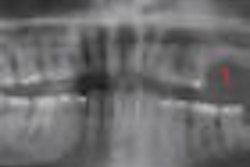Dear Imaging & CAD/CAM Insider,
The standard before-and-after photographs of dental patients are taken primarily to create a clear visual record of each patient and their treatment. But one dental practitioner who has more than a passing interest in photography maintains that, in this day and age, creating patient images is about much more than simple record keeping.
Read why he thinks an artistic approach to patient photography has become increasingly important in this latest Imaging & CAD/CAM Insider Exclusive.
In other Imaging & CAD/CAM Community news, the U.S. Federal Trade Commission (FTC) has told the Maine Board of Dental Examiners that proposed rules limiting what types of x-rays the state's independent practice dental hygienists (IPDHs) can take in an upcoming pilot project are too restrictive and could undermine the project's purpose.
The board's concern is that allowing IPDHs to take certain x-rays could pose potential harm to the public. But the FTC and the Maine Dental Hygienists' Association say there is no evidence to support this, noting that IPDHs in Maine are already allowed to take x-rays. Read more.
On the clinical front, a team of German researchers has developed a unique software tool that works in conjunction with an intraoral camera to automatically detect root canal orifices in human molars, according to a study in the Journal of Dental Education.
And a study in the European Journal of Radiology found that adjusting the angle of the mandible during postimplant imaging using cone-beam CT (CBCT) can reduce the exposure time and related dose by a factor of four without decreasing the image quality.
Some promising new imaging technologies are making their way into dentistry as well:
A surgical camera company new to the dental market has developed what it says is the first high-definition video camera designed specifically to be mounted on dental and surgical loupes. Click here to read more about this compact, lightweight device.
Multispectral imaging has long been used for space-based analysis of environmental conditions and urban growth. Can this same light-based technology improve the ability to detect oral and skin cancers? A Canadian medical device firm thinks so. Read more.
Finally, recognizing a need for vendor-independent training in the basic principles for safe use of CBCT, the American Academy of Oral and Maxillofacial Radiology has launched its own level 1 CBCT competency course. Click here for details.



















